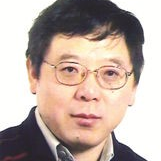III-V Nanostructures and Their Devices
A special issue of Materials (ISSN 1996-1944). This special issue belongs to the section "Advanced Nanomaterials and Nanotechnology".
Deadline for manuscript submissions: closed (31 December 2021) | Viewed by 6514
Special Issue Editors
Interests: nanoelectronic and optoelectronic devices based on semiconductor nanomaterials; characterization of nanostructure and nanodevices by electron microscopy; nanodevices based on III-V nanowires and nanosheets; nanodevices based on 2D semiconductor nanomaterials
Interests: solid state physics; semiconductor nanostructures and 2D materials; nanoelectronic and optoelectronic devices; quantum devices; spin physics and spintronics; Majorana fermions and topological states of matter; semiconductor-based qubits and quantum information science and technology
Special Issue Information
Dear Colleagues,
III-V materials, such as InAs, InSb and GaSb, have small bandgap and high carrier mobility. The electronic mobilities of InAs and InSb and hole mobility of GaSb are much higher than that of Si. These III-V materials have broad applications in nanoelectronic devices, optoelectronic devices, quantum devices and sensors. The bandgaps of InAs, InSb and GaSb are only 0.35 eV, 0.17 eV and 0.73 eV, respectively, which make these materials very promising in infrared photodetector. The bandgap of In1-xGaxAs1-ySby can be tuned by changing the values of x and y, and the heterojunction formed by two kinds of In1-xGaxAs1-ySby materials can have various energy band alignment. These heterojunctions have great potential in tunneling devices (such as tunneling diodes and tunneling field effect transistors TFET) and optoelectronic devices.
The synthesis of III-V nanostructures is the foundamental step for their applications. Bottom-up growth methods can fabricate nanowires and nanosheets free of dislocation and strain. Several methods, including metal-organic chemical vapor deposition (MOCVD) and molecular beam epitaxy (MBE), have been developed to synthesis high quality III-V nanostructures, including nanowires, nanosheets, core-shell and axial heterostructured nanowires, and large-scale arrayed vertical nanowires.
Characterization is necessary to understand the structure and physical properties of nanomaterials. Advanced transmission electron microscopy (TEM) has been used to review the atomic-level structure of nanomaterials. In situ TEM and in situ scanning electron microscopy (SEM) have been developed to probe the structure–property relation. Fascinating properties have been revealed.
High-performance nanodevices have been demonstrated based on III-V nanostructures, including field effect transistor (FET), TFET and recently negative capacitance FET. Vertical gate-all-around FET arrays have been realized with outstanding performance. Optoelectronic devices, such as photodetectors, have been fabricated. Fascinating performances, including negative photoconductivity, have been reported.
Prof. Dr. Qing Chen
Prof. Dr. Hongqi Xu
Guest Editors
Manuscript Submission Information
Manuscripts should be submitted online at www.mdpi.com by registering and logging in to this website. Once you are registered, click here to go to the submission form. Manuscripts can be submitted until the deadline. All submissions that pass pre-check are peer-reviewed. Accepted papers will be published continuously in the journal (as soon as accepted) and will be listed together on the special issue website. Research articles, review articles as well as short communications are invited. For planned papers, a title and short abstract (about 250 words) can be sent to the Editorial Office for assessment.
Submitted manuscripts should not have been published previously, nor be under consideration for publication elsewhere (except conference proceedings papers). All manuscripts are thoroughly refereed through a single-blind peer-review process. A guide for authors and other relevant information for submission of manuscripts is available on the Instructions for Authors page. Materials is an international peer-reviewed open access semimonthly journal published by MDPI.
Please visit the Instructions for Authors page before submitting a manuscript. The Article Processing Charge (APC) for publication in this open access journal is 2600 CHF (Swiss Francs). Submitted papers should be well formatted and use good English. Authors may use MDPI's English editing service prior to publication or during author revisions.
Keywords
- III-V nanostructures
- synthesis
- characterization
- electronic properties
- optoelectronic properties
- field effect transistors
- tunneling field effect transistors
- optoelectronic devices
- quantum devices
Benefits of Publishing in a Special Issue
- Ease of navigation: Grouping papers by topic helps scholars navigate broad scope journals more efficiently.
- Greater discoverability: Special Issues support the reach and impact of scientific research. Articles in Special Issues are more discoverable and cited more frequently.
- Expansion of research network: Special Issues facilitate connections among authors, fostering scientific collaborations.
- External promotion: Articles in Special Issues are often promoted through the journal's social media, increasing their visibility.
- Reprint: MDPI Books provides the opportunity to republish successful Special Issues in book format, both online and in print.
Further information on MDPI's Special Issue policies can be found here.







